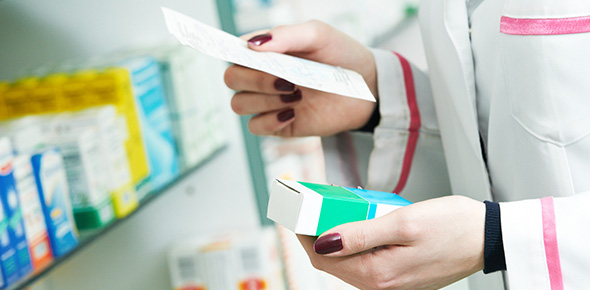Related Flashcards
Related Topics
Cards In This Set
| Front | Back |
|
Why was the Triple Sulfa combination created?
|
Contains equal amounts of each sulfa, reduces incidence of crystalluria while maintaining effectiveness.
(Solubility of one is independent of solubility of the other - can give 1/3 dose of each, all effects add up but don't reach max solubility of any) |
|
Which is the most commonly used single sulfonamide?
|
Sulfisoxazole
(has the highest solubility, the lowest risk of crystalluria of the single sulfas) |
|
Which sulfonamide is used in combination with trimethoprim?
Follow up: why is this particular sulfa used instead of others? |
Sulfamethoxazole (administered as a fixed-ratio combination)
Follow up: is less soluble than sulfisoxazole, but has the same elimination rate/half life as trimethoprim. so both will maintain their concentrations in the blood over the course of administration |
|
Which sulfonamide has a pH of 7.4 in solution?
What does this mean for its uses? |
Sulfacetamide
Used topically to treat trachoma of the eye, because 7.4 is neutral pH for our bodies. |
|
Which sulfa is used to treat burn patients prophylactically?
|
Silver sulfadiazine
Silver ion is released, has antibacterial activity while causing little or no pain. |
|
What is used to treat chloroquine-resistant falciparum malaria?
What is a common side effect? |
Sulfadoxine + pyrimethamine
High incidence of dermatitis reactions |
|
What can be used to treat toxoplasmosis?
|
Sulfadiazine + pyrimethamine
|
|
What was the original sulfonamide?
What was the clinical problem with it? |
Sulfanilamide
Crystalluria was a common problem |
|
Describe the pharmacokinetics of sulfonamides.
|
1.) Well absorbed orally
2.) Distribution: body water, higher concentration in urine, penetrates CSF, crosses placenta 3.) Bound to plasma albumin 4.) Some metabolites are less water soluble than parent compound (when N-acetylated at N4 position) |
|
What two classes of antibiotics are the most likely to cause allergic reactions?
|
Sulfonamides and Beta-lactams
(interestingly, the two most selectively toxic classes of drugs) |
|
What type of illness is Stevens-Johnson syndrome in the context of drug adverse affects?
|
It is a form of exfoliative dermatitis, caused by drug allergy.
|
|
Why should we avoid giving sulfonamides to women in the late stages of pregnancy, lactating women, and young children?
Name and describe the disease that can occur if sulfonamides are given to such patients. |
Sulfonamides can cross the placenta or get into the breast milk. In neonates, it causes:
Kernicterus - deposition of bilirubin in the CNS. Sulfonamides cause the displacement of bilirubin from albumin, and when it is in high enough concentration it can cross the Blood-Brain Barrier because the tight junctions are not yet fully formed at birth. |
|
Why should sulfonamides be avoided in patients who are taking oral anticoagulants, uricosuric agents, or methotrexate?
|
Sulfonamides may displace these drugs from albumin and/or decrease clearance. Bleeding risk with anticoagulants.
|
|
What adverse effect can be seen if patients with G-6-PDH deficiency are given sulfonamides?
|
Hemolytic anemia
|
|
What are three therapeutic uses of sulfonamides?
|
1.) Urinary tract infections (E. Coli)
2.) Nocardiosis (bacterial infection of lungs or systemic, usually only in people with weakened immune systems) 3.) Chlamydial infections, particularly trachoma of the eye |





